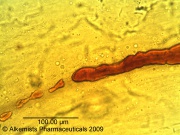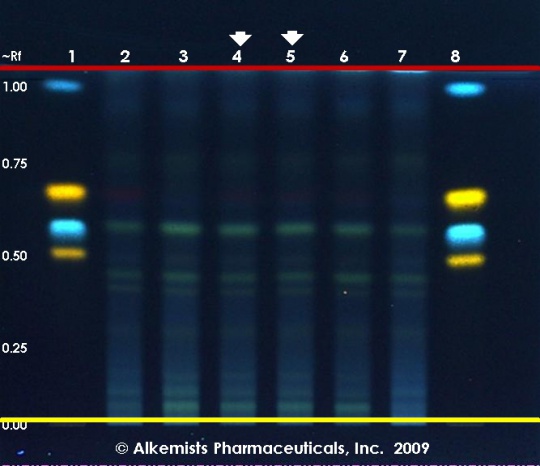Carthamus tinctorius (flower)
(→information from USD 1918) |
|||
| Line 1: | Line 1: | ||
=Introduction= | =Introduction= | ||
=Macroscopic Entries= | =Macroscopic Entries= | ||
| + | {{Macroscopy | source=United States Dispensatory (1918) | ||
| + | | description=''Carthamus tinctorius'' L. ''Safflower''.— | ||
| + | The African, false, American, or dyers' saffron is an annual composite, with a smooth, erect stem, somewhat branched at top, and a foot or two in height. ... The florets are in mass of a red color, diversified by the yellow of the styles contained within the floret. It has a peculiar, slightly aromatic odor, and a scarcely perceptible bitterness. | ||
| + | |||
| + | It contains a fixed oil; also two coloring substances—one red, insoluble in alkaline liquids, and called ''carthamin'' or ''carthamic acid'' by Dobereiner, who found it to possess weak acid properties; the other yellow, and soluble in water. | ||
| + | }} | ||
| + | |||
=Microscopic Entries= | =Microscopic Entries= | ||
{{Microscopy | source=Elan M. Sudberg, Alkemist Laboratories | {{Microscopy | source=Elan M. Sudberg, Alkemist Laboratories | ||
Revision as of 16:00, 16 December 2013
Contents |
Introduction
Macroscopic Entries
|
Microscopic Entries
|
HPTLC Entries
|
Safflower (flower) (Carthamus tinctorius) Lane Assignments Lanes, from left to right (Track, Volume, Sample):
Reference materials used here have been authenticated by macroscopic, microscopic &/or TLC studies according to the reference source cited below held at Alkemists Laboratories, Costa Mesa, CA. Stationary Phase Silica gel 60, F254, 10 x 10 cm HPTLC plates Mobile Phase ethyl acetate: AcCOOH: HCOOH: H2O [10/1.1/1.1/2.4] Sample Preparation Method 0.3 g + 3 ml CH3OH sonicated + heated @ 50° C ~ 1 hr Detection Method Natural Product Reagent + PEG -> UV 365 nm Reference see Adapted from Plant Drug Analysis, Wagner, H., 1996
|
Other Points of Interest
Cite error: <ref> tags exist, but no <references/> tag was found


